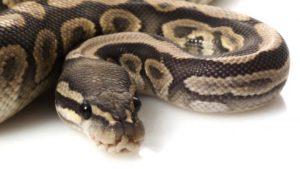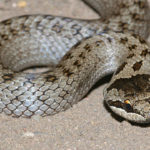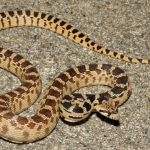What is a baby snake called ?
 A baby snake called snakelet. With the onset of the breeding season, snakes are actively looking for a sexual partner. In this case, the excited males use a chemical analyzer, “smelling” the air with their tongue and transferring to them insignificant quantities of chemical substances left in the environment of the female, to the pair Jacobson organ in the sky. Courtships help the recognition of partners: each species uses its own specific stereotypes of movements.
A baby snake called snakelet. With the onset of the breeding season, snakes are actively looking for a sexual partner. In this case, the excited males use a chemical analyzer, “smelling” the air with their tongue and transferring to them insignificant quantities of chemical substances left in the environment of the female, to the pair Jacobson organ in the sky. Courtships help the recognition of partners: each species uses its own specific stereotypes of movements.
In some species, they are so complex that they resemble a dance, although in many cases the males simply rub their chins against the back of the female. In the end, the partners are intertwined with tails, and the male hemipenis is introduced into the female’s cloaca. The copulatory organ of the serpents is paired and consists of two so-called. Hemipenis, which when excited exaggerate from the cloaca. The female has the ability to store live sperm, so after a single pairing can several times produce offspring. Cubs appear in different ways.
As a rule, they hatch from eggs, but many species of snakes are viviparous. If the incubation period is very short, delay in the laying of eggs can cause the cubs to hatch out of them inside the mother’s body. This is called egg production. However, in some species a simple placenta is formed, through which oxygen, water and nutrients are transferred from the mother to the embryo. Most snake nests are arranged very simply, but still eggs are not deposited anywhere. The female is looking for a suitable place such as a heap of rotting organic material that would protect them from drying out, flooding, sudden temperature changes and predators.
When eggs are protected by parents, they not only frighten off predators, but also, having visited the sun, they can warm up their body with a masonry that develops faster at higher temperatures. Some heat is also released when the nest material is rotting. The number of eggs or calves produced by the female at a time varies from several pieces to about 100 (in oviparous species, on average, more than in viviparous). Large pythons are especially prolific: sometimes they lay more than 100 eggs.
The average number of them in the clutch of snakes, probably no more than 10-12. It is not easy to determine the gestation period for these reptiles, since females can retain live sperm for years, and the duration of embryo development depends on temperature. Different types of reproduction also complicate the task. However, it is believed that in some rattlesnakes the pregnancy lasts approx. 5 months, and the common viper (Vipera berus) – just over two months. The duration of the incubation period varies even more.



























